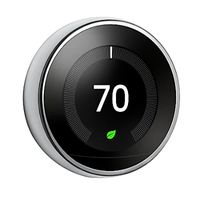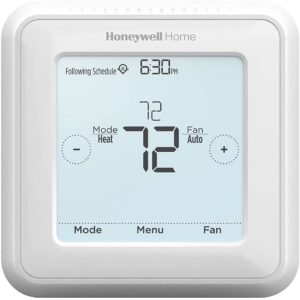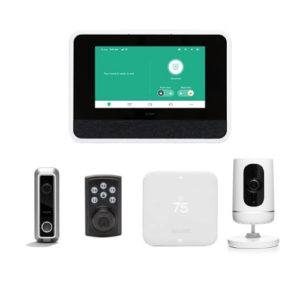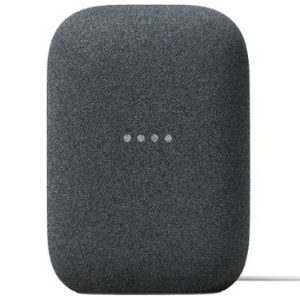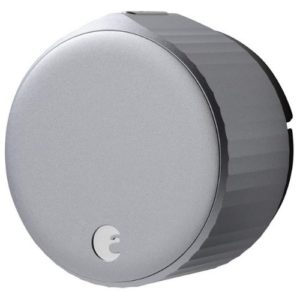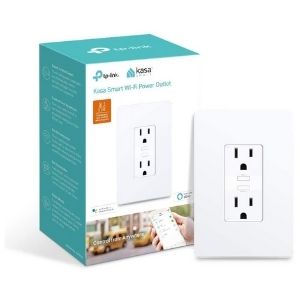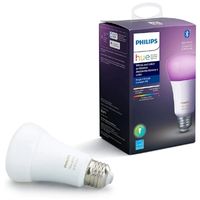Smart thermostats are one of the most popular home automation devices out there, but how do they work exactly? We’ve done the research for you.
How Do Smart Thermostats Work?
SafeWise experts have years of firsthand experience testing the products we recommend. Learn how we test and review.
Info current as of post date. Read full disclaimer.
By signing up, you agree to our Terms and Conditions and Privacy Policy.
Like and subscribe to our YouTube channel for new videos every week.
How do smart thermostats work?
The majority of smart thermostats use Wi-Fi to connect with an app on your phone. Through the app, you can schedule when your heat or cooling turns on, adjust the temperature of your home no matter where you are, and even set up automations with other smart devices.
Some are programmable thermostats that don’t connect with an app but can still schedule heating and cooling routines through a touchscreen display.
What do smart thermostats do?
A smart thermostat makes life easier. You can schedule the thermostat to kick on the heat first thing in the morning to take the chill out of the fall air. Or you can have your air conditioning come on just a couple of hours before you get home from work.
If the thermostat has an app, there’s no need to get up in the middle of your favorite show to make the room more comfortable, either. You can make changes to the temperature from your phone. This can be particularly helpful for those with mobility challenges.
Keep you safe
Smart thermostats can be safety devices when connected to a fire listening device or smart smoke alarms. During a fire, the thermostat switches off your HVAC automatically to prevent making the fire worse by blowing air around.
What are some smart thermostat features?
Smart thermostats can do a smorgasbord of useful things a traditional thermostat can’t.
Learning
Maybe the most useful is learning. Do you like to crank up the heat first thing in the morning or cool down the house before bed? A learning thermostat will memorize your routines and automatically adjust the temperature to match your needs.
Learning your schedule can save you money on heating and cooling since your HVAC system, heat pump, or furnace won’t run when they aren’t needed.
Voice controls
A variety of smart thermostats let you adjust the temperature through voice commands to Amazon Alexa, Google Assistant, and Apple’s Siri. So even if you can’t find your phone, comfort is just a yell away.
Energy tracking
Many smart thermostats also help you track energy use. Some even have energy-saving presets that can also save you money on your electricity bill by controlling your smart heating and cooling in the most cost-efficient way.
Smart home automations
If you have a smart home setup, you can add your smart thermostat to automations with other smart devices. Create an automation to lower the thermostat, turn off your smart lights and smart outlets, and arm your smart home security system when you go to bed, for example.
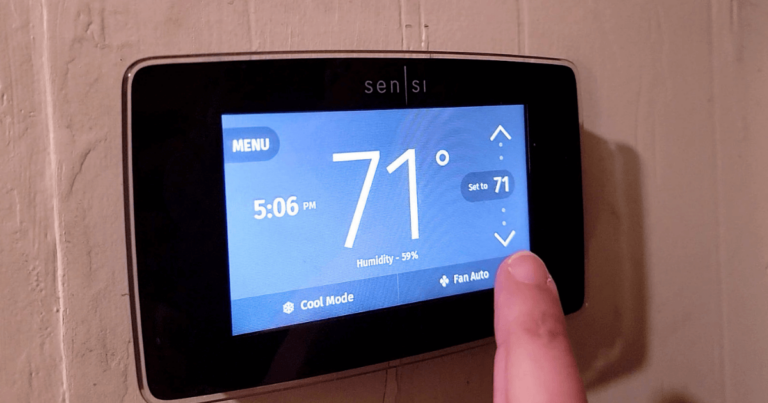
How do I set my smart thermostat?
Most smart thermostats have touchscreens, which makes setting the comfiest of temperatures super easy:
- Tap on the screen to wake it up from sleep mode.
- Choose Heat or Cool from the mode options.
- Tap the up or down arrow to pick the specific temperature.
You can also use the thermostat’s app to control the temperature. Often the steps are the same in the app as they are on the thermostat’s touchscreen. Just open the app, choose heating or cooling from the mode menu and press the arrow buttons to make adjustments.
How do I know if a smart thermostat will work?
Most smart thermostats need to connect to a continuous supply of electricity. You need to find out if your current wiring setup can supply the juice your new thermostat needs.
Turn off your home’s power at the breaker box and remove your current thermostat from the wall. (You may need to remove some screws, or the thermostat may just pop off a bracket attached to the wall.)
The wires coming from the wall to the back of the thermostat should be labeled. Continuous current is supplied through your thermostat’s common wire (or C wire). Look for a wire labeled with the letter C. If you see a C wire, you should be able to install a smart thermostat in your home.
What if I don’t have a C wire?
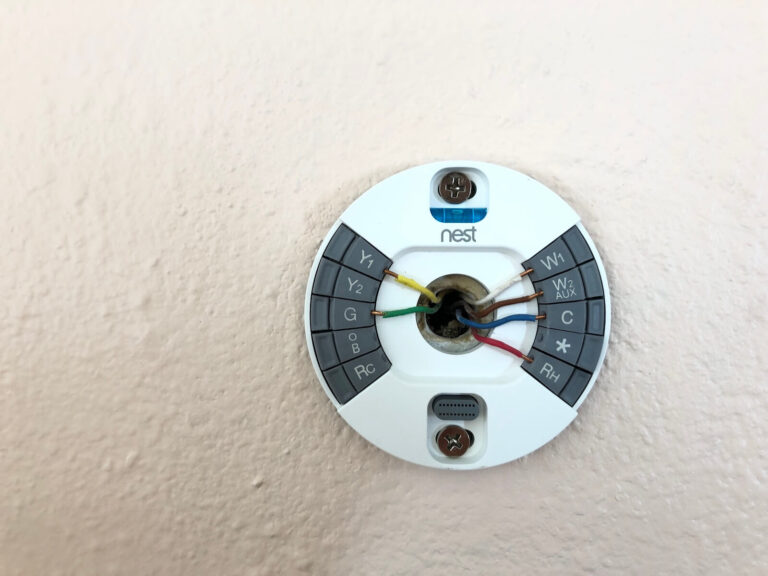
If you don’t see a C (or if the wires are unlabeled), you’ll need to call in an electrician. I didn’t have a C wire in my home, so I needed an electrician to install one. There are some power extender kits that you can use to install one yourself, but we’re hesitant to recommend wiring that isn’t done by a professional.
Some online videos and articles recommend using a C-wire adapter if you don’t have a C wire to hook up your smart thermostat. While this can work for a time, the electrician we consulted said using an adapter will ultimately burn up your new thermostat. I tried it, and the Nest† thermostat lasted around a year before conking out. If you do use an adapter, make sure the brand recommends it.
If you don’t want to bother calling an electrician, you can find a smart thermostat that doesn’t require a C wire like the Honeywell Home RTH8560D. These thermostats run on batteries instead of current from your home’s wiring. A downside is you’ll need to change the batteries periodically.
Some battery-powered smart thermostats are a little on the dumber side too. For example, the Honeywell Home RTH8560D doesn’t work with virtual assistants like Alexa. And since it doesn’t have an app, you have to set up schedules on the touchscreen.
Should I check the smart thermostat operating system?
Yep. Some smart thermostat apps aren’t compatible with all phone operating systems. Typically, most smart thermostats will work with both Apple and Android operating systems. If you have a different type of phone, contact the thermostat’s manufacturer to see if your phone will work with the thermostat’s app.
Do smart thermostats need Wi-Fi?
Yep. Some smart thermostat apps aren’t compatible with all phone operating systems. Typically, most smart thermostats will work with both Apple and Android operating systems. If you have a different type of phone, contact the thermostat’s manufacturer to see if your phone will work with the thermostat’s app.
Can I install a smart thermostat myself?
Probably. It involves wiring, but if you can wire your smart doorbell, you can wire a smart thermostat. It’s not very complicated.
How do I install a smart thermostat myself?
Though each smart thermostat is different, the installation is similar:
- Grab a small screwdriver and the installation instructions that came with your thermostat.
- Turn off the power at the breaker.
- Remove your old thermostat from the wall by unclicking it from its wall bracket or by unscrewing it. Do not disconnect the wires yet.
- Take a picture of how the wires connect to the back of the old thermostat. This is a good reference to have if the wire labeling is on the thermostat. You’ll need to know which wire goes where in a minute.
- Remove the wires. The wires can be attached to the thermostat using small clips that you press to release the wires, or they may be wrapped around screws. If they are wrapped around the screws, use the screwdriver and loosen them just a bit to make removing the wires easier.
- Remove the bracket if there is one.
- Install the new bracket if your device came with one.
- Connect the wires to the new thermostat. The smart thermostat should have a wiring diagram in the instructions. Follow the diagram. If you don’t, you may damage the device.
- Follow the on-screen instructions to connect the smart thermostat to your Wi-Fi (if needed).
- Download the app and connect it to your new thermostat, if it has one. Use the app to set up heating and cooling schedules.
Related articles on SafeWise
Disclaimers
Amazon: *Product prices and availability are accurate as of post date and are subject to change. Any price and availability information displayed on Amazon at the time of purchase will apply to the purchase of this product. Safewise.com utilizes paid Amazon links.
Certain content that appears on this site comes from Amazon. This content is provided “as is” and is subject to change or removal at any time.
Google: †Google, Google Nest Secure, [any other related Google Products] and other related marks are trademarks of Google LLC.
Compare top smart home products
Data as of post date. Offers and availability may vary by location and are subject to change. SafeWise uses paid Amazon links.
†Google, Google Nest Secure, Google Home, Google Nest Protect, and other related marks are trademarks of Google LLC.
Recent Articles




